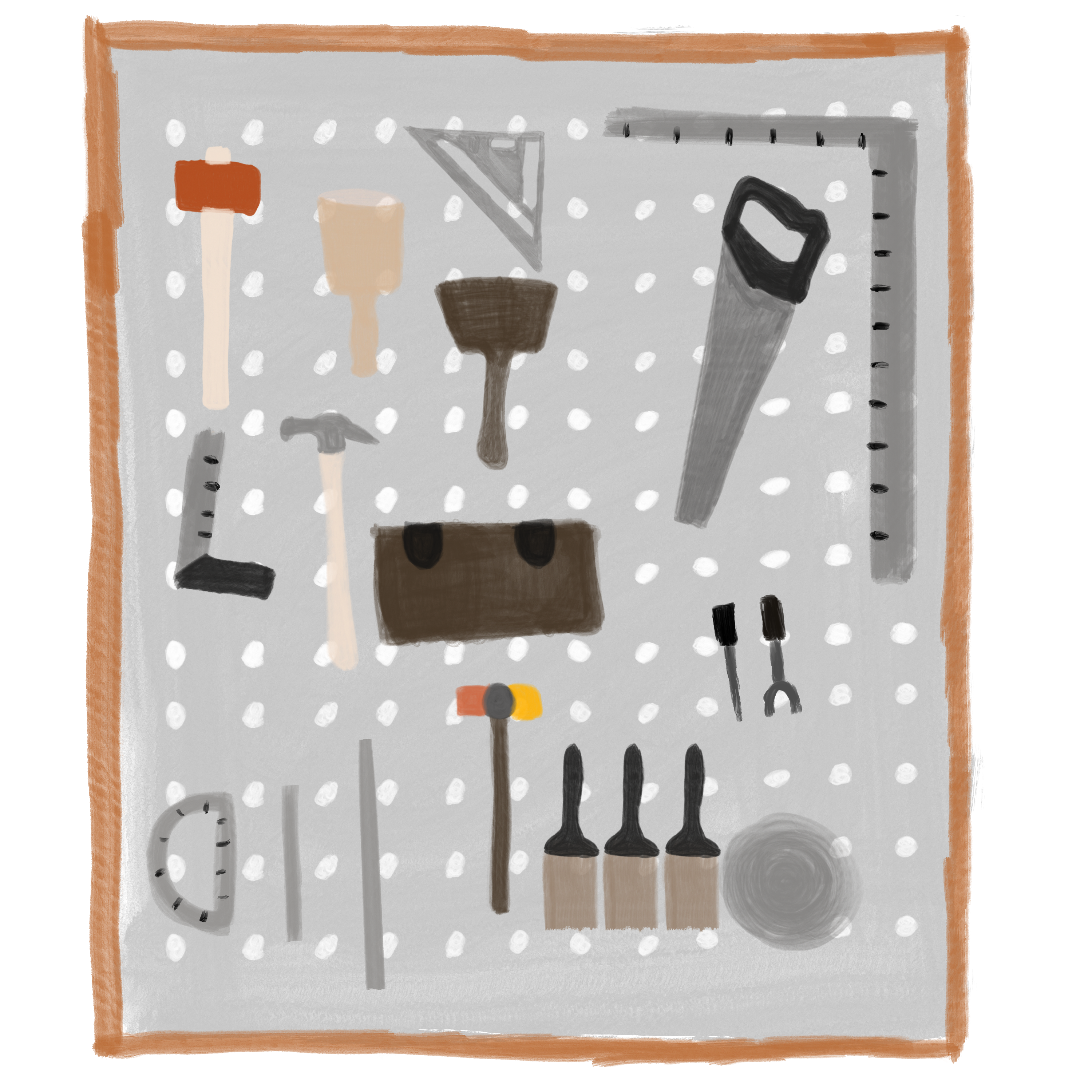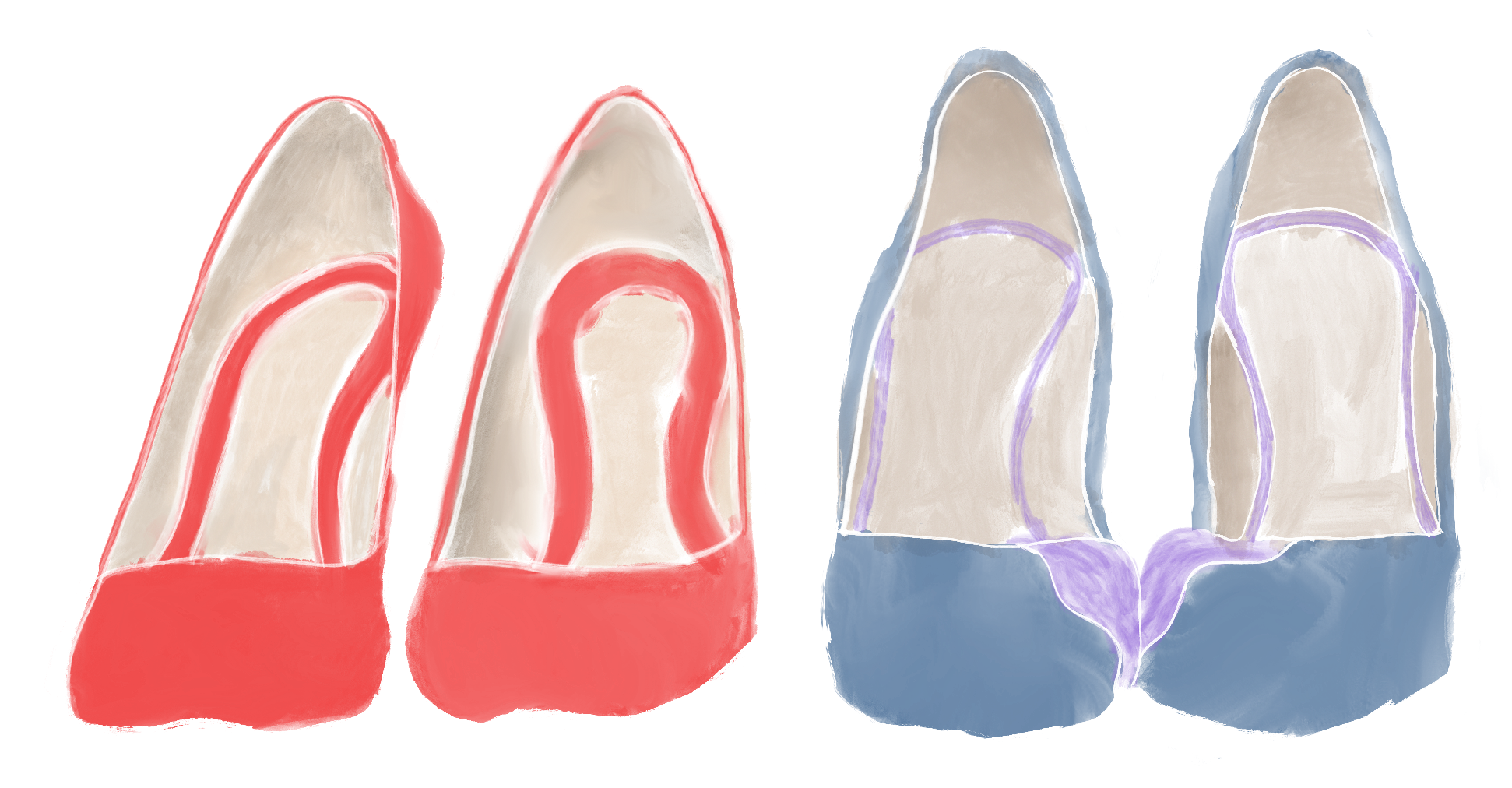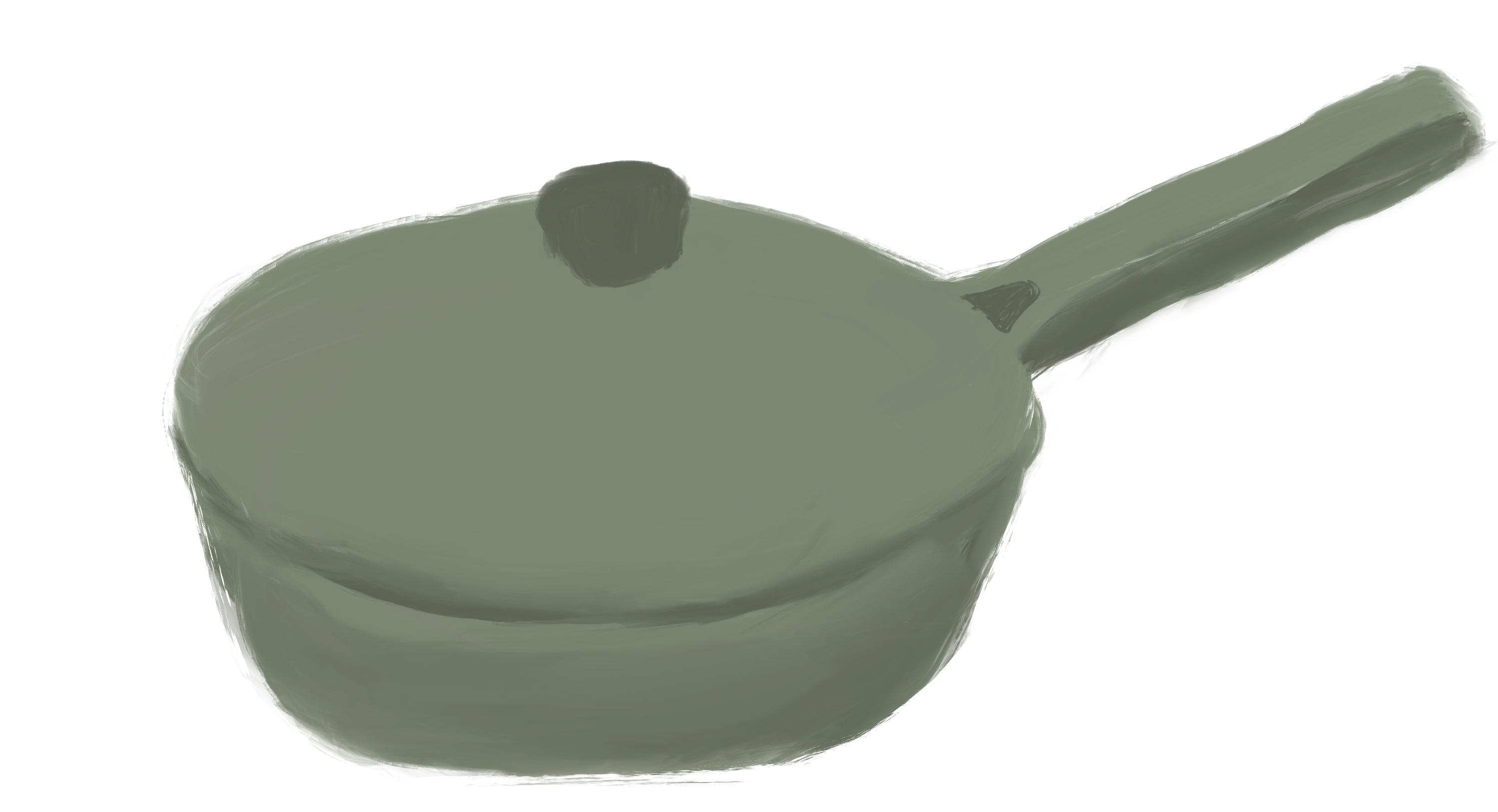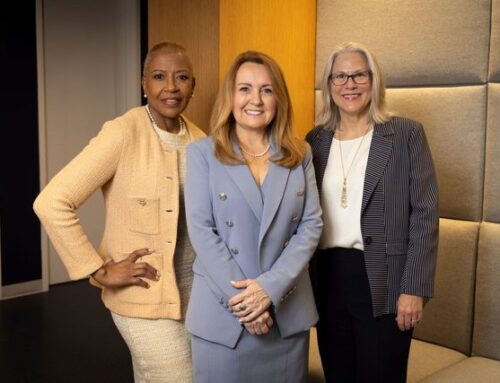
Illustrations by Jessica Turner
The daughter crafted items that she sold on Etsy, but her setup was all over the kitchen. Armstrong brainstormed how the renovation could incorporate their daughter’s hobby.
Armstrong carved out a workspace for the daughter in the nearby laundry room by removing space from an oversized adjacent living room. Widening the laundry room created a separation from the washer and dryer and the daughter’s desk.
She now had all the space she needed to create.
“We created a functional environment that was not going to feel like she was sitting next to the washer and dryer,” she says.
To redesign spaces catered to family functionality, Armstrong asks clients these questions: How does this house function for you now? What do you like about it? What is not working for you here?
The 18-year interior designer and 14-year neighbor says this helps homeowners think about messes in their space and how these problem areas can be trans-formed.
In Armstrong’s experience, rethinking design has resulted in
new crafting spaces or areas to hold backpacks after school and extracurriculars.
“A lot of our homes were built in the ‘60s and ‘70s, and they just weren’t designed for that,” she says of Lake Highlands. “But as things have evolved, lifestyles have evolved and kids are involved in more activities.”
Rethinking design for functionality helped one Merriman Park Estates mom create a multifunctional desk space. To do this, Armstrong and the homeowner added a filing cabinet, printer and gift wrapping station all in one an existing armoire next to the desk.
To the right of the desk area, Armstrong and the client transformed the space into a “dumping station” with hooks to hold back- packs and cubbies to store shoes.
Rather than expand, many Lake Highlands families can use existing space to support their day-to-day lives.
“Instead of thinking, ‘How does my home look? Think of, ‘How does my home function?’” Armstrong says. “It’s such an important thing, especially in some of our homes that are a bit on the smaller end.”

CHAMPAGNE TASTE ON A BEER BUDGET: HOW TO ACHIEVE HIGH-QUALITY DESIGN IN ONE WEEK
Armstrong launched a Design Concierge package at the start of the pandemic that offers full-service design quality without breaking the bank.
The condensed process goes through each level of design and produces a “paint by numbers” in the end for the homeowner.
“The client will be able to have a set of instructions that will guide them through the design that we create together,” she says. “They will be able to procure that and install that on their own, given the directions and specific selections that we make during that process.”
Armstrong first goes through a “programming process” where she learns the homeowner’s aesthetic desires and needs. She maps out goals and sets expectations for what can be achieved through the Design Concierge.

THE EIGHT-STEP PROCESS
1. Pre-Consultation: Armstrong asks clients to create Pinterest boards with visual inspiration photos. Homeowners send her photos of their space before the phone consultation.
2. Phone consultation: For 45 minutes to an hour, Armstrong and clients review design needs and what isn’t liked about the current space.
3. Before meeting in person: Armstrong bookmarks ideas and concepts for the clients.
4. In-person meeting: Clients and Armstrong narrow down selections for a new design board.
5. Paint by numbers: After gathering all necessary information from the in-person meeting, Armstrong transforms her notes into a formula for the client’s space. Examples: Re-upholster chairs, buy additional furniture, how to incorporate existing pieces, choosing paints and wallpapers.
6. Floor plan: Armstrong draws up a floor plan with notes on styling, tips and inspirational images.
7. Work orders: Clients receive the floor plan. Armstrong writes up work orders and suggests vendors.
8. Purchasing page: Armstrong sends the clients a page of links and steps to follow to execute the design.

The price effectiveness comes through in the weeklong timeline. With full-service design, Armstrong typically spends three to six months with a client.
“Every week, I’m dedicating time and resources that my company has dedicated to your project,” she says. “It takes a massive amount of time and company resources.”
Design Concierge is completed in a formatted way for her to predict the number of hours she spends on a project.
“We source from Spoonflower on some things, but then we also source to some higher-end vendors,” Armstrong says. “Through the programming process, I’ll get a sense for, if we’re going to choose Schumacher or DecoratorsBest online to pull your fabric samples.”
This package is unique to Armstrong. Other designer equivalents take form in online design or hourly consultations.
“I didn’t want to do that,” she says of hourly consultations. “No. 1 because I knew that a successful design project has to go through multiple phases of the design process.”
Armstrong has averaged about two clients a month since Design Concierge started last year. She says she will cap the service at two clients for now to keep up with full- service design as well.
Clients can take advantage of Design Concierge without Armstrong ever stepping into their home. Emailing, pinning and social media makes the planning process a breeze. Once it comes time to put the plan in motion, Armstrong can get an eye for the space over Zoom.
Lake Highlands neighbors interested in Armstrong’s colorfully eclectic aesthetic and approach may find this service more financially in reach compared to full-service design.
“This is a great way to get professional help and a game plan for their space in a more affordable manner,” she says.





